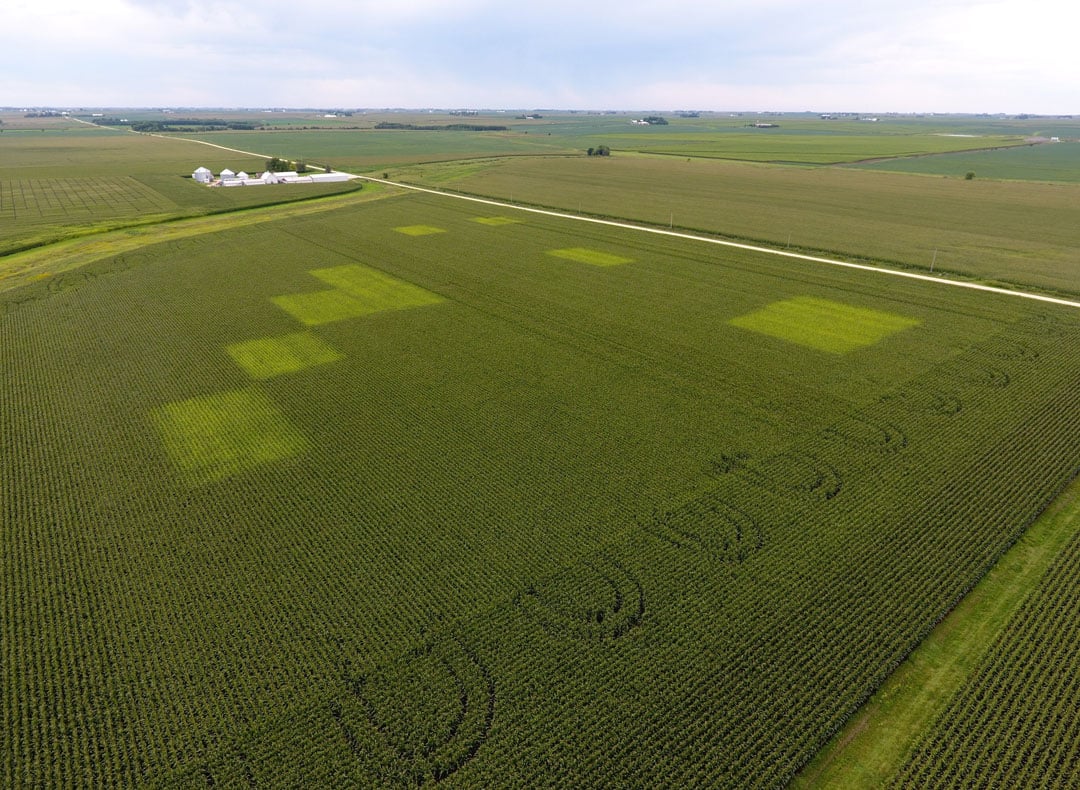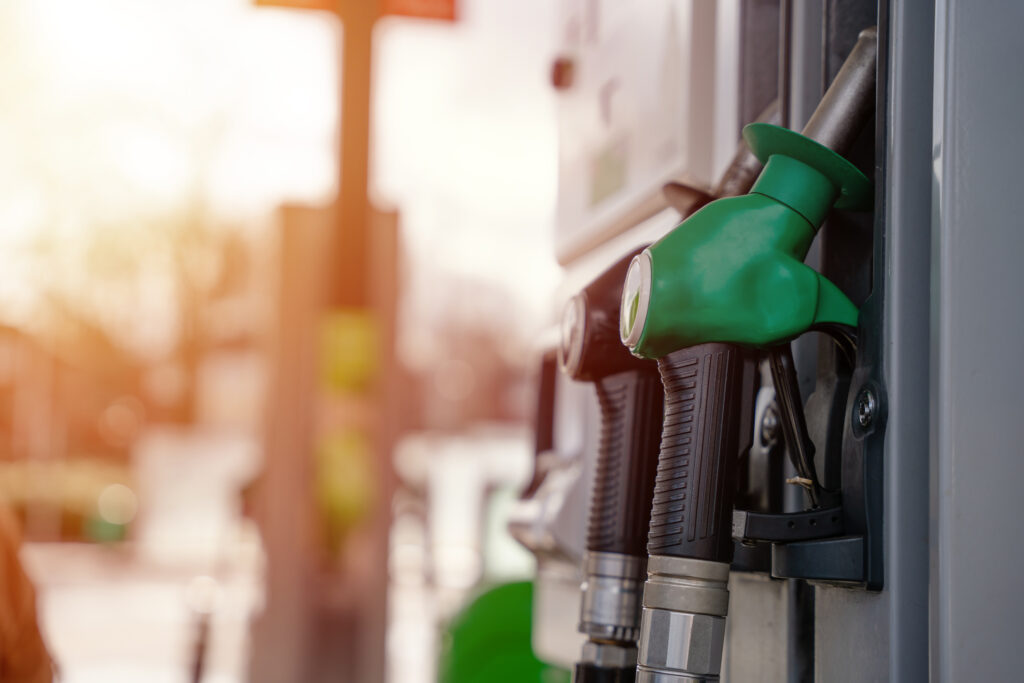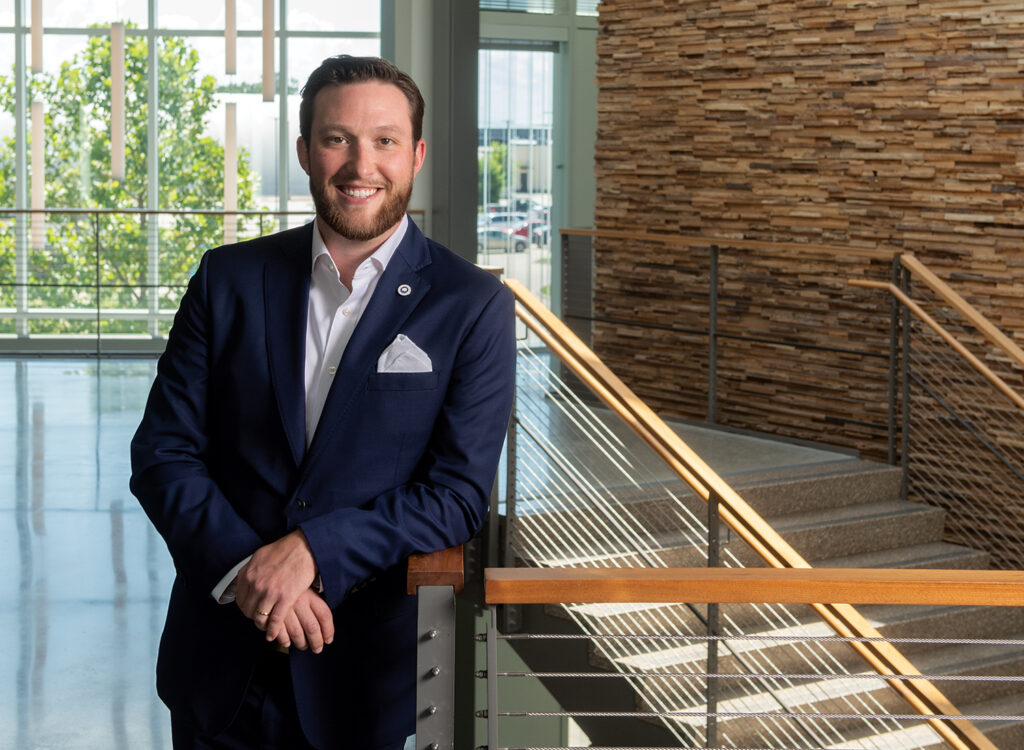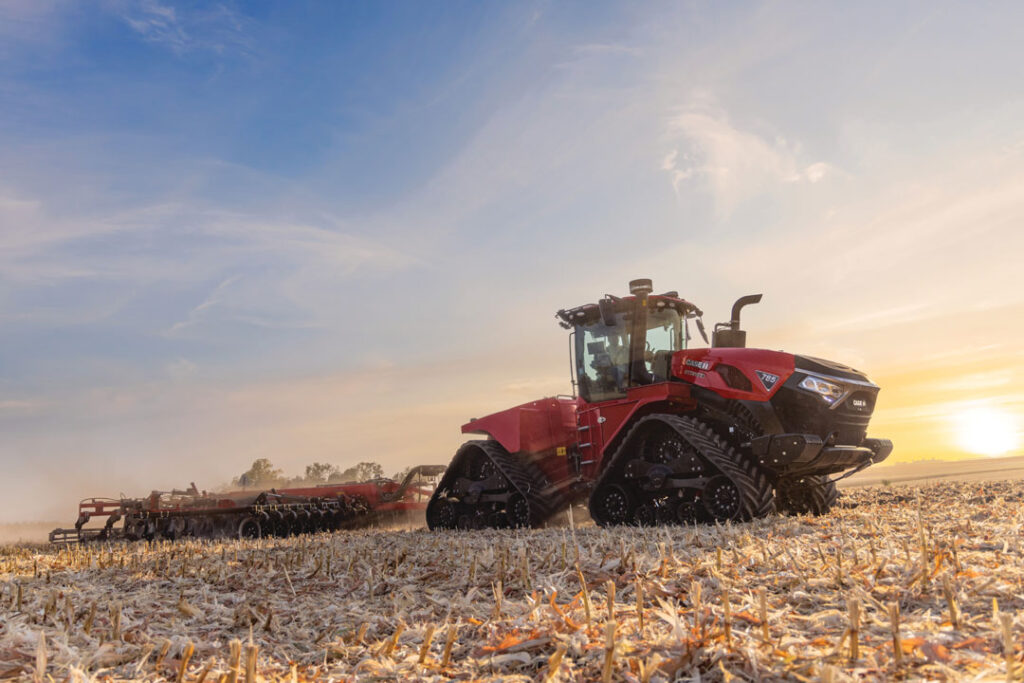Better data for better decisions
ISU research effort partners with farmers to evolve nitrogen fertilizer management

Sarah Diehn May 3, 2024 | 6:00 am
8 min read time
1,896 wordsAg and Environment, Business Record Insider, Innovation and EntrepreneurshipAs planting season gets underway for farms around Iowa, an early-stage research effort out of Iowa State University is focused on giving farmers better data and tools to make decisions that will affect their operations and the environment for years to come.
The goal of the Iowa Nitrogen Initiative is to aid farmers in determining the ideal amount of nitrogen fertilizer to apply to corn crops based on environmental conditions, farming practices and other variables that change year-to-year.
Nitrogen is an important nutrient for corn to grow well. It supports higher yields when plants receive the right amount, but too little can reduce yields and too much leads to excess nitrogen in the water and air, according to Mike Castellano, Iowa State professor and lead for the Iowa Nitrogen Initiative.
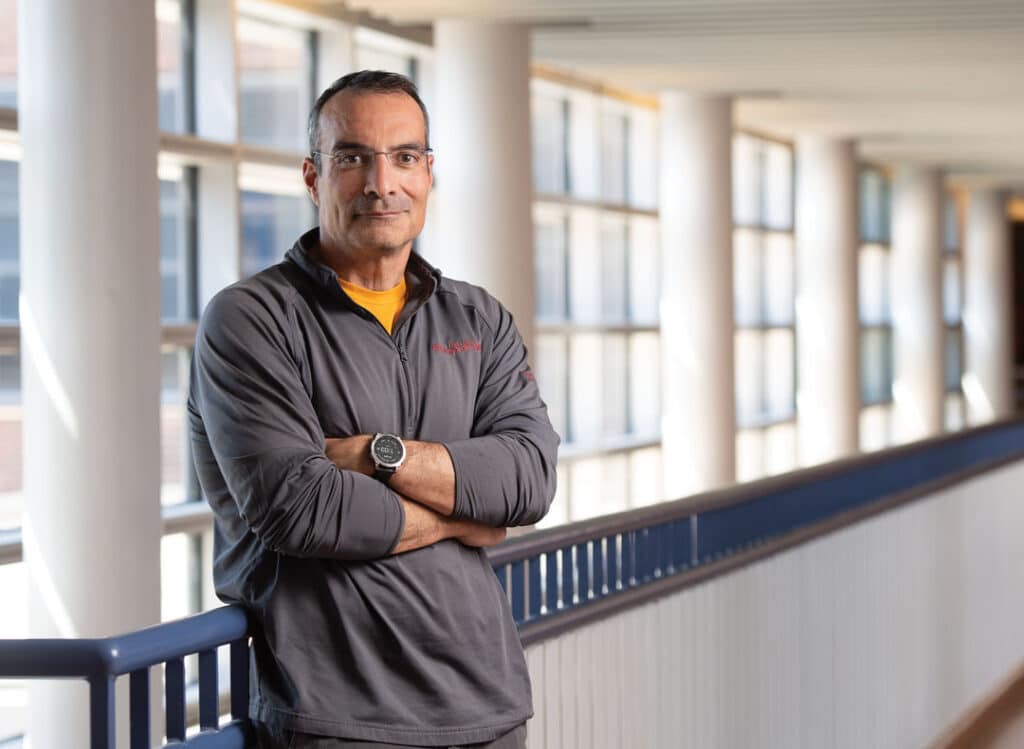
Until this project launched in 2022, much of Iowa State’s research on optimum nitrogen fertilizer rates for corn was conducted on about a dozen university research farms throughout the state.
Castellano said collecting data and developing guidance about the optimum nitrogen rate from just these farms is similar to collecting weather data from only a few places around the state.
“Imagine if we only collected weather data at a dozen places in the state of Iowa, how accurate our forecasts would be,” Castellano said. “Imagine if we stopped collecting weather data tomorrow, how good the weather forecast for next month would be.”
Iowa State currently provides farmers average optimum nitrogen rates based on two factors: whether the most recent crop grown in a field was corn or soybeans and whether farms are located in southeast Iowa or the rest of the state.
But many factors affect what the best rate is.
The variety of corn seed, the soil profile, how and when the fertilizer is applied, variations in weather and different crop management practices all play into the billions of potential scenarios that affect the optimum nitrogen rate, Castellano said.
“The optimum nitrogen rate could vary more within one field than it does from southeast Iowa to the rest of the state,” he said.
While averages were the best option when the method was created about 20 years ago, he said, the Iowa Nitrogen Initiative is trying a new approach that employs recent advances in precision agriculture and data science.
The initiative is partnering with farmers who volunteer to run nitrogen rate trials on a piece of their fields, which increases the amount and variety of data Iowa State has to inform what the optimum nitrogen rate is under different sets of conditions. The trial data will ultimately become tools for farmers to simulate crop and environmental outcomes.
Castellano said this project aims to give farmers a more active and informed role in deciding how to manage their farms.
“We want the farmer to make the ultimate decision, but we want to provide them the information to make the best decision possible for their operation,” he said.
Following a pilot year in 2022, the project did 270 on-farm trials in crop year 2023, and it plans to meet or exceed that number in 2024.
The project received a $1 million grant from the Iowa Department of Agriculture and Land Stewardship in 2023 and 2024 to help fund the project, and local commodity groups that contribute annually include the Iowa Corn Promotion Board, Iowa Soybean Association and Iowa Pork Producers Association.
Finding the best rate
This year’s planting season will mark Rod Pierce’s 51st crop as a farmer in and around Woodward in Dallas County. He is planting approximately 1,400 acres with primarily corn.
A participant in nitrogen rate trials for the Iowa Nitrogen Initiative as well as partners outside the university, Pierce said he varies his nitrogen rate each year based on his own testing and data from Iowa State to see if he can improve yields.
“Most of my nitrogen learning is not a ‘one time do it this way and this is it.’ I go to a lot of [ISU Extension] meetings, and I don’t think I’ve been to one yet where I haven’t at least learned something,” Pierce said.
One year, he decided to experiment with applying no nitrogen to a small area of a field. A section of that land was near a pond with high levels of organic matter in the soil.
“We were out looking at it in the summer, and I mean, some of the places it was just pure yellow with no nitrogen, but when we walked into that pond it was just as green as anywhere and we hadn’t put anything on it,” he said.
He’s also seen how the weather affects how much fertilizer is needed. He said a “tremendous drought” one year in the 1970s meant some of the nitrogen stayed in the ground and would be used up the following year.
These are the types of nuances the Iowa Nitrogen Initiative wants to capture from the trials.
After running experiments designed by Iowa State, Pierce and other trial participants provide data on the nitrogen application, including how much and the method they used, and their yields at the end of the season.
On the data science side of the project, the trial data is put into the same kind of model used for weather forecasts, which allows the team to simulate how specific scenarios may turn out in practice.
Castellano said they’ll talk with farmers about ways they’d like to manage their crops and plug the scenario into the model for an initial test.
“Before they have to take a risk, doing it in the field, before we have to take a risk doing experiments on university research farms, we can run it in the simulation model and see what the outcomes are,” he said. “If the outcomes are promising in the simulation model, we may conduct experiments, we may work with a farmer to do this on a very small piece of their land and see if the results are consistent, and then scale up from there.”
Castellano said the model currently excels at looking at historical data and simulating how conditions in the past would have affected the optimum nitrogen rate, which will be the focus of the benchmarking tool the initiative is developing.
For example, the tool could apply 30 years of weather data to a set of conditions from the 2023 trial data and see how the optimum rate would have changed under different weather conditions. The trial data from 2024 and future years will be added to the tool each year, he said.
A longer-term project is a forecasting tool that can operate in real time, providing the optimum nitrogen rate based on the conditions that a farmer is experiencing as the growing season progresses.
The database and tool chest the initiative is building have implications on a regional level as Iowa State leads a group of seven states — Ohio, Indiana, Michigan, Wisconsin, Illinois, Minnesota and Iowa — that all currently recommend average optimum nitrogen rates for their states.
“They all appreciate and understand that the optimum rates are very variable, but up to this point, we’ve all agreed that we can’t interpret that variability so we’re just going to recommend farmers do the average,” Castellano said.
‘The future of doing it right’
Supplying data for more informed decision-making is also meant to help farmers minimize the trade-offs between getting high enough yields to be profitable and environmental responsibility, Castellano said.
“Certainly farmers understand that their decisions affect water quality. There’s no question about that. Their decisions also affect whether they’ll be able to farm next year,” he said.
Pierce said one reason he participates in nitrogen rate trials is to ensure as much fertilizer as possible is going into the plant instead of the groundwater.
“I think it’s valuable that we do stuff that’s environmentally the best, and down the road, I think it’s important that I track and do these [trials] to help the future of farming and the future of doing it right,” Pierce said.
Castellano said farmers who are overfertilizing are a top priority because that results in more loss of nitrogen to the environment on a pound-for-pound basis.
The Iowa Nutrient Research Center (INRC) is a water quality initiative established by the Iowa Board of Regents following legislation passed in 2013 that researches practices to reduce the nitrogen and phosphorus entering Iowa’s waterways and how to increase implementation.
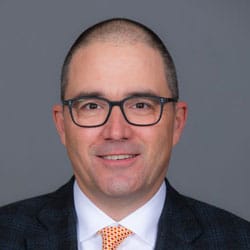
Matt Helmers, director of the INRC, told the Business Record that nitrogen is primarily lost when water moves through a soil profile where there is excess fertilizer, which then has a couple of possible pathways into waterways.
Nitrogen levels above the Environmental Protection Agency’s drinking water standard of 10 parts per million need to be corrected, which is a cost to municipalities. For smaller communities using a private well system, testing is needed to determine the nutrient concentrations, Helmers said.
Nationally, nitrogen that gets into the Mississippi River contributes to the hypoxic zone, also known as the dead zone, in the Gulf of Mexico because the nutrient causes more algae growth, which consumes oxygen and sunlight that plant and animal life need.
Over the past 20 years, Helmers said, the rate of nitrogen in Iowa’s waters has held “pretty steady.”
“I think that’s good news, bad news. It hasn’t been increasing much when we look at it that way, [but] it hasn’t been decreasing,” he said.
Helmers said improving Iowa’s water quality means more efficient management of nutrients in the field, like the Iowa Nitrogen Initiative is working toward, and “edge-of-field” safeguards, such as cover crops, to help catch nutrients that are still lost. And 10 years into the INRC’s existence, there’s still a lot of work to do, he said.
“When we think about it, we have 24 million acres of annual row crops,” Helmers said. “Really we need something on almost all those acres. … So while we’ve increased the acreage of cover crops and other practices, it’s still in many cases a pretty small fraction of the overall landscape.”
Helmers said the crop management practices the INRC researches can influence fertilizer management and the optimum rate. Fields with cover crops in the winter may need nitrogen earlier in the corn’s growth to help it grow while the cover crop dies, for example.
Castellano said the Iowa Nitrogen Initiative is “learning really fast” how different crop management methods affect fertilizer application. Once better understood, those variables will be added to the tools for farmers.
In addition to the technological innovations supporting advances in nutrient reduction, Helmers said the future of water quality in Iowa also rests on how many people are working to address it.
“If we get very proactive about [water quality], I think there’s some economic return. I think there could be some jobs associated with it,” he said. “If we are really doing more with nutrient management, with cover crops, with all these edge-of-field practices, it’s going to take people to do it as well.
“I’ve been at Iowa State for 20 years, and especially over the last 10 years, I am seeing more of our graduates stay in the state [to work] on these types of problems than I did in the first 10 years, and I think that could grow even more in the future.”

Sarah Diehn
Sarah Diehn is editor at Business Record. She covers innovation and entrepreneurship, manufacturing, insurance, and energy.

